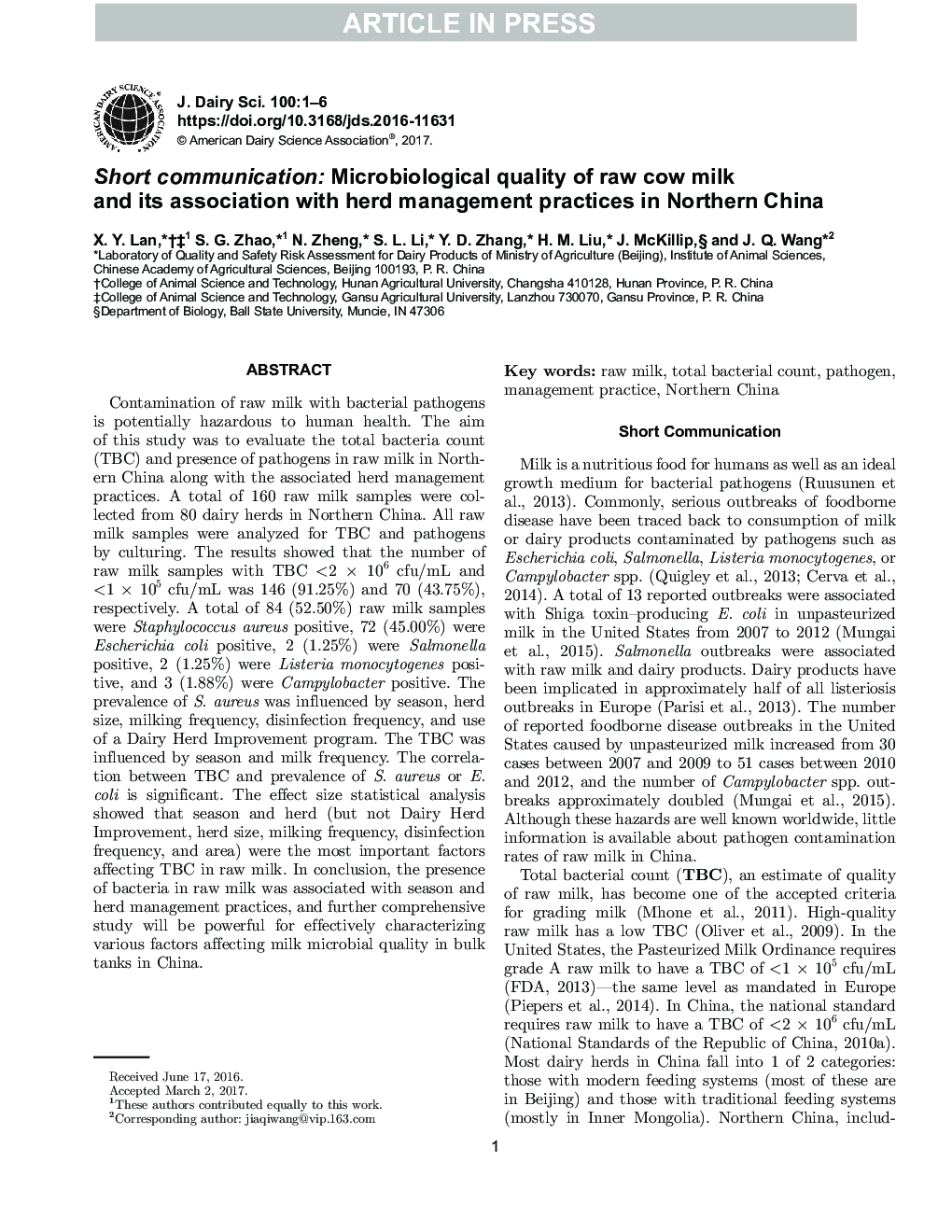| Article ID | Journal | Published Year | Pages | File Type |
|---|---|---|---|---|
| 5542231 | Journal of Dairy Science | 2017 | 6 Pages |
Abstract
Contamination of raw milk with bacterial pathogens is potentially hazardous to human health. The aim of this study was to evaluate the total bacteria count (TBC) and presence of pathogens in raw milk in Northern China along with the associated herd management practices. A total of 160 raw milk samples were collected from 80 dairy herds in Northern China. All raw milk samples were analyzed for TBC and pathogens by culturing. The results showed that the number of raw milk samples with TBC <2 Ã 106 cfu/mL and <1 Ã 105 cfu/mL was 146 (91.25%) and 70 (43.75%), respectively. A total of 84 (52.50%) raw milk samples were Staphylococcus aureus positive, 72 (45.00%) were Escherichia coli positive, 2 (1.25%) were Salmonella positive, 2 (1.25%) were Listeria monocytogenes positive, and 3 (1.88%) were Campylobacter positive. The prevalence of S. aureus was influenced by season, herd size, milking frequency, disinfection frequency, and use of a Dairy Herd Improvement program. The TBC was influenced by season and milk frequency. The correlation between TBC and prevalence of S. aureus or E. coli is significant. The effect size statistical analysis showed that season and herd (but not Dairy Herd Improvement, herd size, milking frequency, disinfection frequency, and area) were the most important factors affecting TBC in raw milk. In conclusion, the presence of bacteria in raw milk was associated with season and herd management practices, and further comprehensive study will be powerful for effectively characterizing various factors affecting milk microbial quality in bulk tanks in China.
Related Topics
Life Sciences
Agricultural and Biological Sciences
Animal Science and Zoology
Authors
X.Y. Lan, S.G. Zhao, N. Zheng, S.L. Li, Y.D. Zhang, H.M. Liu, J. McKillip, J.Q. Wang,
